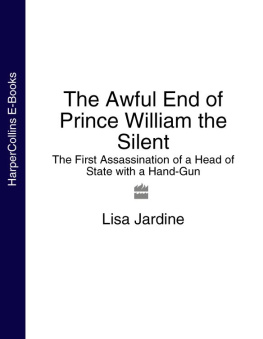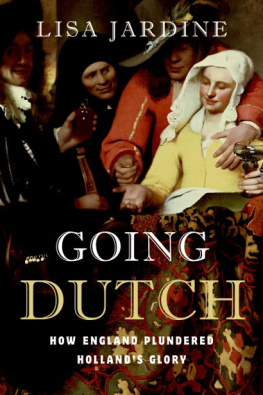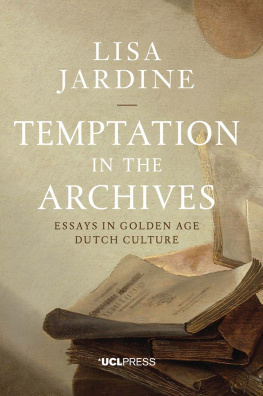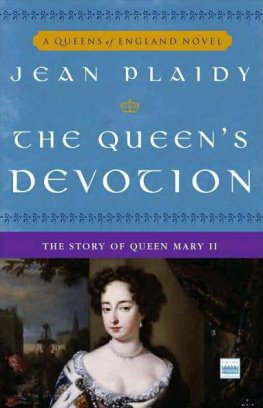When Prince William the Silent was gunned down in the hallway of his Delft residence in 1584, his death rocked the cause of Protestantism in the Low Countries. Without their charismatic leader, the Dutch opponents of the occupying Catholic forces of Philip II of Spain looked likely to be brought permanently under the domination of the Habsburgs.
In the event, the Dutch Protestant cause managed to carry on its opposition to the Habsburgs, and eventually succeeded in establishing an independent Dutch Republic. But the assassination of William of Orange with a small, concealed, self-igniting handgun had lasting repercussions across the face of Europe. William had been a marked man for many years, with a Catholic price on his head. Honour and riches had been publicly promised to anyone who could assassinate him. Yet in spite of elaborate security, a lone assassin armed with a hidden pistol was able to penetrate Williams ring of steel and shoot him at point-blank range in his own home. After that, no head of state would ever feel safe again, and regimes across the Continent enacted legislation attempting to ban small hand-guns entirely, or to restrict their use in the vicinity of a prominent political figure or head of state.
The assassination of William the Silent, then, marked the moment when new technology intruded into the lives of public figures, emphasising their perpetual vulnerability to violent assault. The event was one of those milestones in history a marker, a turning point, an epoch-making incident, a directional laser-beam of light from the past to the future on which our understanding of the past depends. Lisa Jardines account highlights the extraordinary way in which events on the ground at key moments in history influence forever what comes after them.
The Awful End of Prince William the Silent is the second title in an exciting series of small books edited by Amanda Foreman and Lisa Jardine Making History each of which covers a turning point in history. Each book in the series will take a moment at which an event or events made a lasting impact on the unfolding course of history. Such moments are of dramatically different character: from the unexpected outcome of a battle to a landmark invention; from an accidental decision taken in the heat of the moment to a considered programme intended to change the world. Each volume of Making History will be guaranteed to make the reader sit up and think about Europes and Americas relationship to their past, and the key figures and incidents which moulded and formed its process.
Amanda Foreman
Lisa Jardine
Accidents of History
William of Nassau, scion
Of a Dutch and ancient line,
I dedicate undying
Faith to this land of mine.
A prince I am, undaunted,
Of Orange, ever free,
To the king of Spain Ive granted
A lifelong loyalty.
(First verse of the Dutch national anthem, the Wilhelmus)
F ROM THE SIXTEENTH CENTURY down to the present day, Dutch history is saturated with heroic memories of the house of Orange. The Dutch football team wears an orange strip, while its fans sport the Prince of Oranges colours in everything from scarves to face-paints. The Dutch national anthem celebrates the courage of a prince undaunted of Orange, prepared to stand up against the tyranny of the King of Spain and his occupying forces, in verses second only to the French Marseillaise in their patriotic fervour (the Low Countries have suffered many occupations over the centuries).
In English-language history books, the only member of the Orange dynasty in the Low Countries to feature prominently is William III (16501702), who in 1689 ascended the throne of England with his wife Mary Stuart, replacing his Catholic father-in-law King James II, who had been forced to abdicate following the so-called Glorious Revolution of the previous year. Yet the life and actions on the public stage of William IIIs great-grandfather, William I of Orange (15331584) known to contemporaries as William the Silent (because of his reluctance to speak his mind) and the man celebrated in the Dutch national anthem for his courage against foreign oppressors played a prominent part historically in the policies of his royal neighbour Queen Elizabeth I and exerted lasting influence over European affairs of state. The manner of Williams assassination in 1584 provoked panic at the English court and alarmed Protestant administrations across Europe. It resulted in the decision to commit English forces on the European mainland against the Spanish Habsburg troops of Philip II in 1585 an eventuality Queen Elizabeth had avoided with characteristic determination throughout almost twenty years of her reign, and a decision which led directly to the launch of the Spanish Armada against England in 1588.
This is the story of William the Silents murder. Apart from its
The second half of the sixteenth century saw its fair share of sensational gun crimes. Pistols may have been regarded as new-fangled and unreliable by military strategists, who doubted their tactical reliability as weapons of war and mistrusted the highly manoeuvrable light-horse cavalry pistoleers who used them, but they caught on rapidly with civilians bent on mischief. In February 1563, Francis, Duke of Guise was killed while out hunting, by a pistol-wielding Huguenot on horseback. In 1566 a pistol was held to the belly of Mary, Queen of Scots, while assassins stabbed her secretary Rizzio to death in the adjacent room. It was allegedly the sound of a pistol shot close by that led the French queen mother Catherine de Medici to believe that an assassination attempt against the Catholic faction was under way, and thereby set in action the chain of events leading to the infamous St Bartholomews Day massacre of French Huguenots in 1572.
Religious sectarian conflict figures prominently as a motive for audacious attempts at pistol assassination of key political figures in the early modern period. The internal rifts caused by the doctrinal antagonisms between Catholics and Protestants led to civil war in France, political fragmentation and violent confrontation in the Low Countries, and corrosive political mistrust in England. A brother might betray a brother, or one neighbour might reveal anothers secret religious observance. The new handgun was a weapon perfectly matched to the times a hidden source of confidence, providing its wearer with a ready defence against attack, or a means of sudden, violent death in the hands of a hitherto undetected enemy.
In a Europe saturated with intelligence-gatherers working on behalf of both Catholic and Protestant causes (and the regimes which supported one or other religious party), almost every court and great household had been infiltrated by somebody covertly retained by a contrary faction to carry out local espionage and collect intelligence. A number of these individuals were double agents, serving whichever party currently had the political upper hand. William the Silents eventual assassin was believed by Williams household to be a loyal Protestant recruited as an agent to spy in the Spanish camp on behalf of the Protestant Dutch. In fact he was a secret agent of Philip II, a devout Catholic, who had insinuated himself into the very heart of the Prince of Oranges entourage. His resolute adherence to the Habsburg and Catholic causes in the Netherlands was only uncovered during his interrogation after the event. Then as now, and all too like the suicide bombers of the twenty-first century, intense commitment to his faith gave the assassin the determination to commit an atrocity in circumstances which made it unlikely that he himself would survive the attempt.













